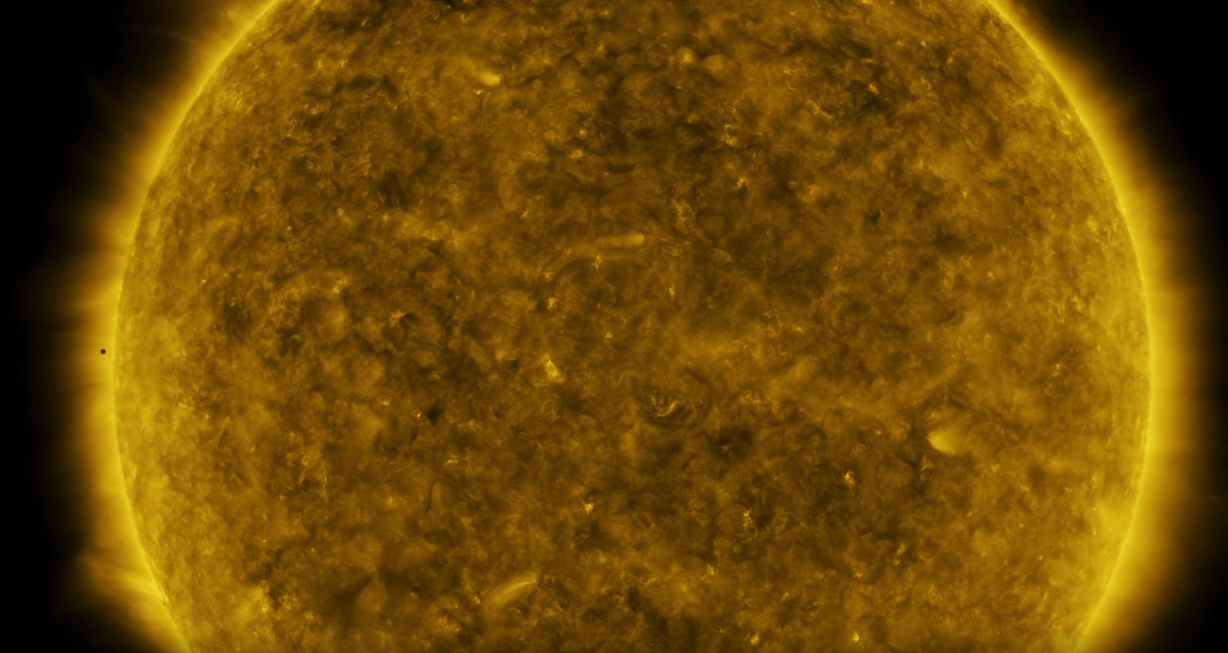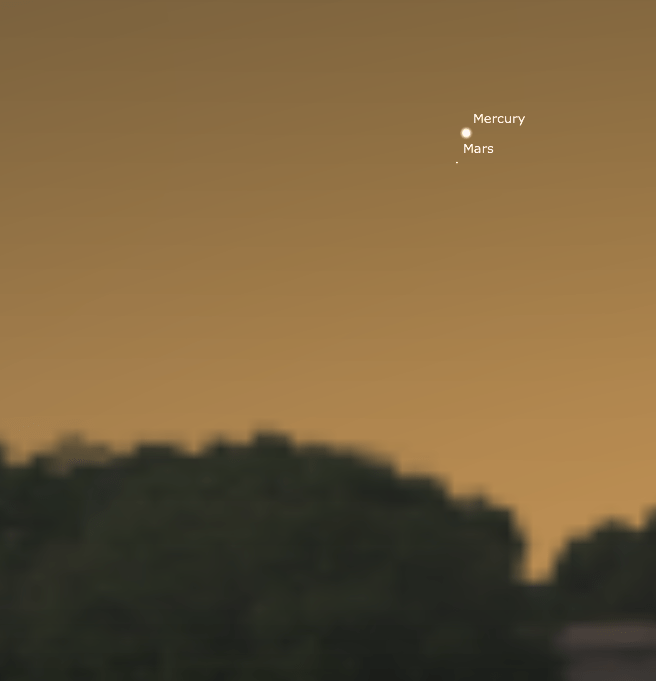It’s not unusual for space probes to complete gravitational flyby manoeuvres en route to their destination. It’s a bit more unusual when the flyby is at the destination planet. ESA’s BepiColombo spacecraft is manoeuvring around Mercury into its final orbit. With each flyby it gets closer and closer and closer until its finally captured by Mercury’s gravity in 2026. During the latest flyby, stunning images of the nearest planet to the Sun were captured from just a few hundred km. Checkout the best and most stunning images of Mercury yet.
Satellites Watched Mercury’s Transit From Space, Confirming That Yes, the Sun Has At Least One Planet
Do you wonder how astronomers find all those exoplanets orbiting stars in distant solar systems?
Mostly they use the transit method. When a planet travels in between its star and an observer, the light from the star dims. That’s called a transit. If astronomers watch a planet transit its star a few times, they can confirm its orbital period. They can also start to understand other things about the planet, like its mass and density.
The planet Mercury just transited the Sun, giving us all an up close look at transits.
Continue reading “Satellites Watched Mercury’s Transit From Space, Confirming That Yes, the Sun Has At Least One Planet”Mercury Is Tectonically Active & Shrinking

Mercury is a fascinating planet. As our Suns’ closest orbiting body, it experiences extremes of heat and cold, has the most eccentric orbit of any Solar planet, and an orbital resonance that makes a single day last as long as two years. But since the arrival of the MESSENGER probe, we have learned some new and interesting things about the planet’s geological history as well.
For example, images that were recently obtained by the NASA spacecraft revealed previously undetected landforms – small fault scarps – that appear to be geologically young. The presence of these features have led scientists to conclude that Mercury is still contracting over time, which means that – like Earth – it is tectonically active.
In geology, fault scarps refer to small step-like formations in the surface of a planet, where one side of a fault has moved vertically relative to the other. Previously, scientists believed that Mercury was tectonically dead, and that all major geological activity had taken place in the planet’s early history.
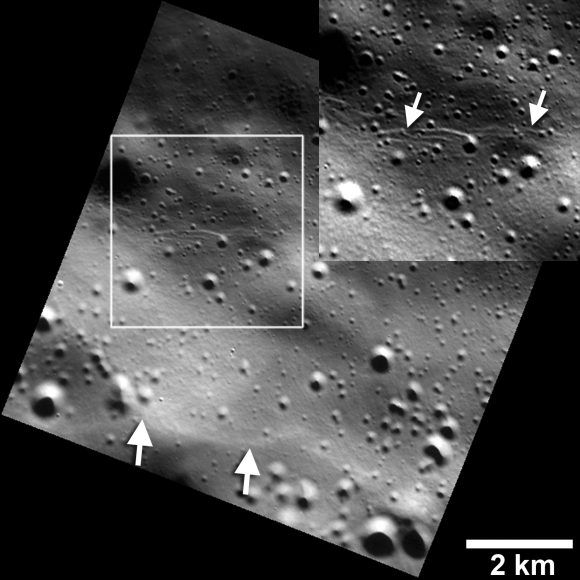
This was evidenced by features spotted by the MESSENGER and Mariner 10 probes, both of which found evidence of large wrinkle ridges and fault scarps on the surface. The features were reasoned to be the result of Mercury contacting as it cooled early in its history (i.e. billion of years ago).
This action caused the planet’s crust to break, forming cliffs up to a kilometer and a half (about 1 mile) in height and hundreds of kilometers long. However, as the MESSENGER team noted, these small scarps were considerably younger, dating to about 50 million years of age.
They concluded that the scarps would have to be this young in order to survive bombardment by comets and meteoroids, a common occurrence on Mercury. They also noted their resemblance to similar features on the Moon, which also has young scarps that are the result of recent contraction.
The team’s findings were reported in a paper titled “Recent Tectonic Activity on Mercury Revealed by Small Thrust Fault Scarps“, which appeared in the October issue of Nature Geoscience.
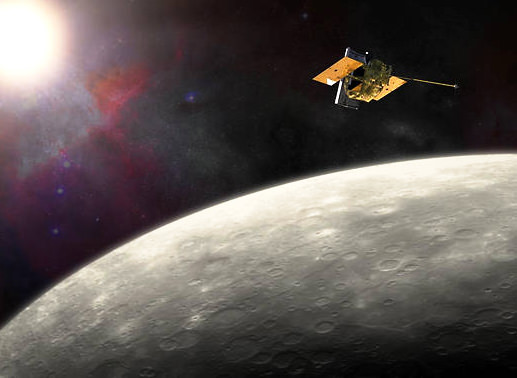
As Tom Watters, the Smithsonian senior scientist at the National Air and Space Museum and the lead author of the paper, stated in a NASA press release:
“The young age of the small scarps means that Mercury joins Earth as a tectonically active planet, with new faults likely forming today as Mercury’s interior continues to cool and the planet contracts.”
The findings were made during the last 18 months of the MESSENGER mission, during which time the probe lowered its altitude to get higher-resolution images of the planet’s surface. The findings are also consistent with recent findings about Mercury’s global magnetic field, which appears to be powered by the planet’s slowly-cooling outer core.
As Jim Green, NASA’s Planetary Science Director, said of the discovery:
“This is why we explore. For years, scientists believed that Mercury’s tectonic activity was in the distant past. It’s exciting to consider that this small planet – not much larger than Earth’s moon – is active even today.”
All told, these findings have let scientists know that the planet is still alive, in the geological sense. It also means that that there is likely such as thing as Mercury-quakes, something which NASA is sure to follow up on if and when a lander mission (equipped with seismology instruments) is dispatched to the surface of the planet.
Further Reading: NASA, Nature Geoscience
How Do We Terraform Mercury?
Welcome back to another installment in the “Definitive Guide to Terraforming” series! We complete our tour of the Solar System with the planet Mercury. Someday, humans could make a home on this hostile planet, leading to the first Hermians!
The planet Mercury is an intensely hot place. As the nearest planet to our Sun, surface temperatures can get up to a scorching 700 K (427° C). Ah, but there’s a flip-side to that coin. Due to it having no atmosphere to speak of, Mercury only experiences intensely hot conditions on the side that is directly facing the Sun. On the nighttime side, temperatures drop to well below freezing, as low as 100 K (-173° C).
Due to its low orbital period and slow rate of rotation, the nighttime side remains in the dark for an extended period of time. What’s more, in the northern polar region, which is permanently shaded, conditions are cold enough that water is able to exist there in ice form. Because of this, and a few reasons besides, there are many who believe that humanity could colonize and even terraform parts of Mercury someday.
Mercury Spacecraft Moves To Testing Ahead Of 2016 Launch To Sun’s Closest Planet
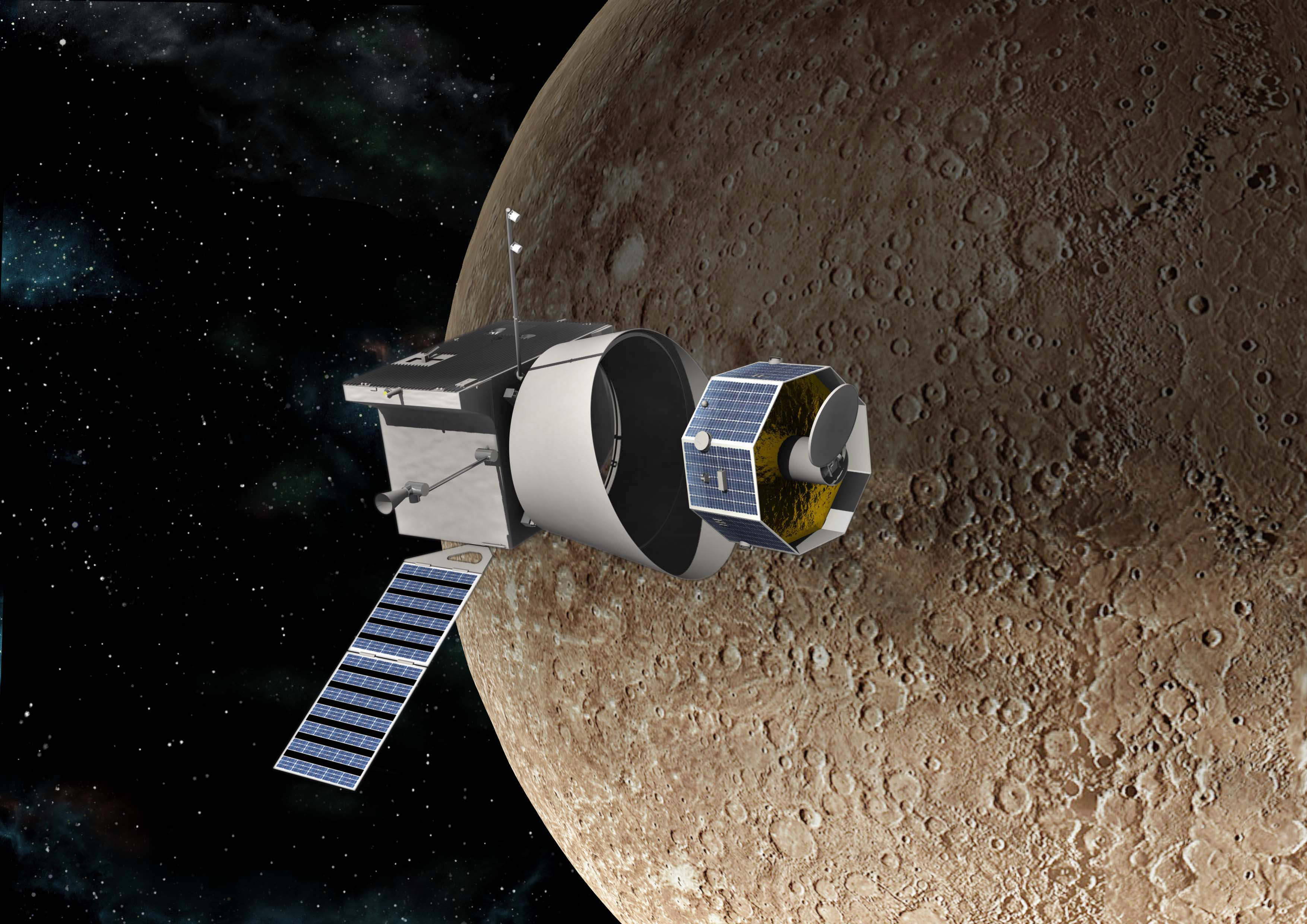
After facing down a couple of delays due to technical difficulties, Europe’s and Japan’s first Mercury orbiter is entering some of the final stages ahead of its 2016 launch. Part of the BepiColombo orbiter moved into a European testing facility this past week that will shake, bake and otherwise test the hardware to make sure it’s ready for its extreme mission.
Because Mercury is so close to the Sun, BepiColombo is going to have a particularly harsh operating environment. Temperatures there will soar as high as 350 degrees Celsius (662 degrees Fahrenheit), requiring officials to change the chamber to simulate these higher temperatures. Time will tell if the spacecraft is ready for the test.
BepiColombo is also special because it includes not one orbiting spacecraft, but two. Flying in different orbits, the Mercury Planetary Orbiter and the Mercury Magnetospheric Orbiter will try to learn more about this mysterious planet. NASA’s MESSENGER (MErcury Surface, Space ENvironment, GEochemistry and Ranging) spacecraft has spent the past few years orbiting Mercury, but before then, we had very little information on the planet. (And before MESSENGER, only brief flybys from NASA’s Mariner 10 in the 1970s turned up spacecraft-based information on Mercury.)
MESSENGER has turned up quite a few surprises. It’s showed us more about the nature of Mercury’s tenuous atmosphere and it’s discovered probable water ice (!) in permanently shadowed areas, among other things. The European Space Agency and Japan hope to push our understanding of the Sun’s closest planet when BepiColombo gets there in 2024.
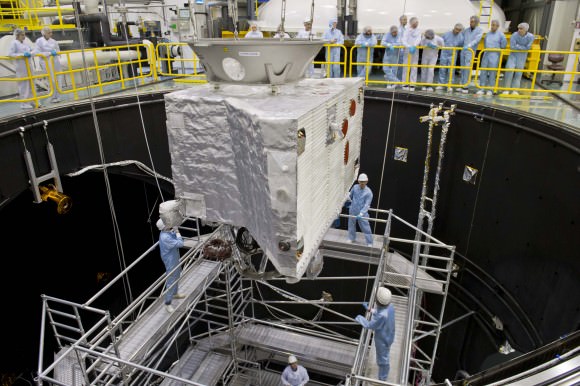
There are so many questions that Mercury presents us, and BepiColombo is trying to answer a few of those. For example, Mercury’s density is higher than the rest of the other terrestrial planets for reasons that are poorly understood. Scientists aren’t sure if its core is liquid or solid, or even it has active plate tectonics as Earth does. Its magnetic field is a mystery, given that Mars and Venus and the Moon don’t have any. And there are tons of questions too about its atmosphere, such as how it is produced and how the magnetic field and solar wind work together.
The two spacecraft will be carried together to Mercury’s orbit along with a component called the Mercury Transfer Model (MTM), which will push the spacecraft out there using solar-electric propulsion. Just before BepiColombo enters orbit, MTM will be jettisoned and the Mercury Polar Orbiter will ensure the Mercury Magnetospheric Orbiter receives the needed resources to survive until the two spacecraft move into their separate orbits, according to the European Space Agency.
As for why it takes so long to get out there, to save on fuel the mission will swing by Earth, Venus and Mercury to get to the right spot. Once the two spacecraft are ready to go, they’re expected to last a year in orbit — with a potential one-year extension.
Mariner 10: Best Venus Image and 1st Ever Planetary Gravity Assist – 40 Years Ago Today
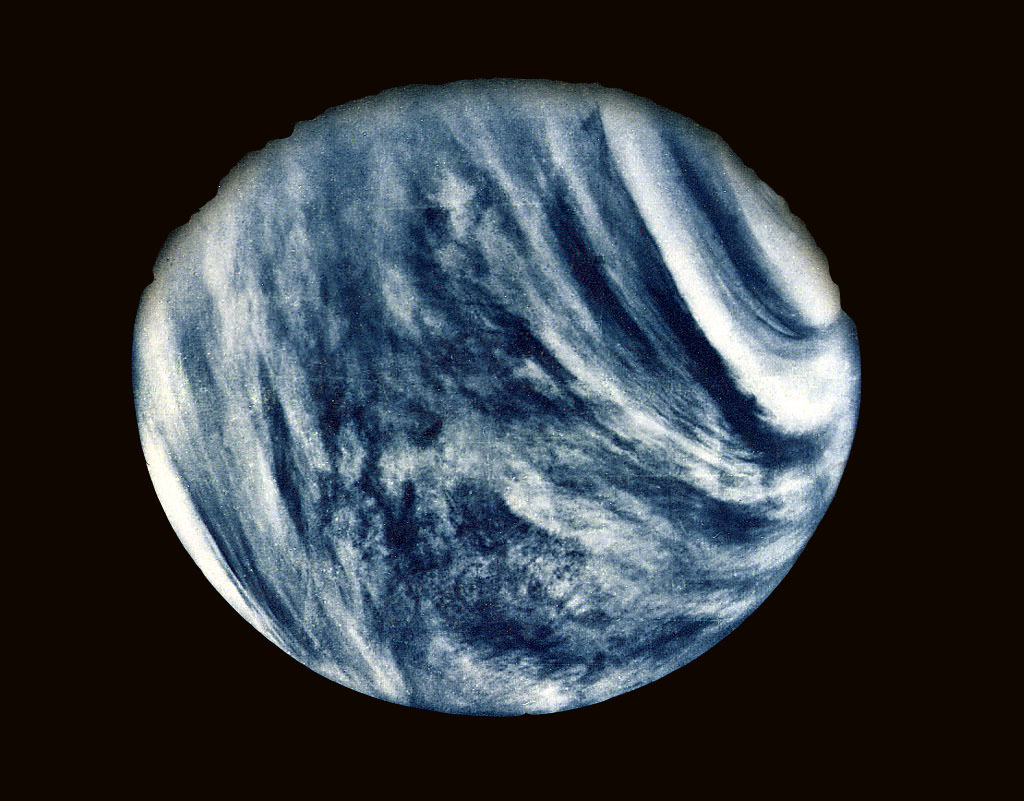
Exactly 40 Years ago today on Feb. 5, 1974, Mariner 10, accomplished a history making and groundbreaking feat when the NASA science probe became the first spacecraft ever to test out and execute the technique known as a planetary gravity assisted flyby used to alter its speed and trajectory – in order to reach another celestial body.
Mariner 10 flew by Venus 40 years ago to enable the probe to gain enough speed and alter its flight path to eventually become humanity’s first spacecraft to reach the planet Mercury, closest to our Sun.
Indeed it was the first spacecraft to visit two planets.
During the flyby precisely four decades ago, Mariner 10 snapped its 1st close up view of Venus – see above.
From that moment forward, gravity assisted slingshot maneuvers became an extremely important technique used numerous times by NASA to carry out planetary exploration missions that would not otherwise have been possible.
For example, NASA’s twin Voyager 1 and 2 probes launched barely three years later in 1977 used the gravity speed boost to conduct their own historic flyby expeditions to our Solar Systems outer planets.
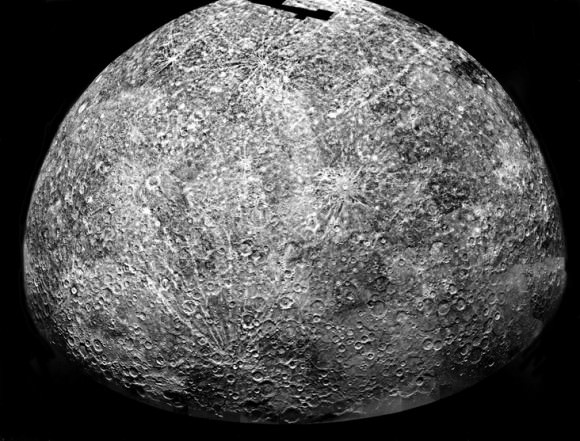
This is a photomosaic of images collected by Mariner 10 as it flew past Mercury on 29 March 1974. It shows the southern hemisphere. The spacecraft took more than 7,000 images of Mercury, Venus, the Earth, and the moon during its mission. Credit: NASA
Without the flyby’s, the rocket launchers thrust by themselves did not provide sufficient interplanetary speed to reach their follow on targets.
NASA’s Juno Jupiter orbiter just flew back around Earth this past October 9, 2013 to gain the speed it requires to reach the Jovian system.
The Mariner 10 probe used an ultraviolet filter in its imaging system to bring out details in the Venusian clouds which are otherwise featureless to the human eye – as you’ll notice when viewing it through a telescope.
Venus surface is completely obscured by a thick layer of carbon dioxide clouds.
The hellish planet’s surface temperature is 460 degrees Celsius or 900 degrees Fahrenheit.
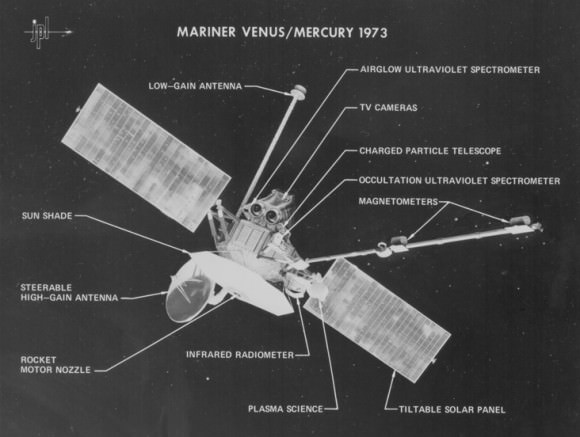
Following the completely successful Venus flyby, Mariner 10 eventually went on to conduct a trio of flyby’s of Mercury in 1974 and 1975.
It imaged nearly half of the planets moon-like surface, found surprising evidence of a magnetic field, discovered that a metallic core comprised nearly 80 percent of the planet’s mass, and measured temperatures ranging from 187°C on the dayside to minus 183°C on the nightside.
Mercury was not visited again for over three decades until NASA’s MESSENGER flew by and eventually orbited the planet – and where it remains active today.
Mariner 10 was launched on Nov. 3, 1973 from the Kennedy Space Center atop an Atlas-Centaur rocket.
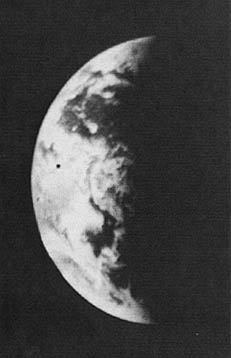
Ultimately it was the last of NASA’s venerable Mariner planetary missions hailing from the dawn of the Space Age.
Mariner 11 and 12 were descoped due to congressional budget cuts and eventually renamed as Voyager 1 and 2.
The Mariner 10 science team was led by Bruce Murray of the Jet Propulsion Laboratory (JPL), Pasadena, Calif.
Murray eventually became the Director of JPL. After he passed away in 2013, key science features on Martian mountain climbing destinations were named in his honor by the Opportunity and Curiosity Mars rover science teams.
Stay tuned here for Ken’s continuing LADEE, Chang’e-3, Orion, Orbital Sciences, SpaceX, commercial space, Mars rover and more planetary and human spaceflight news.

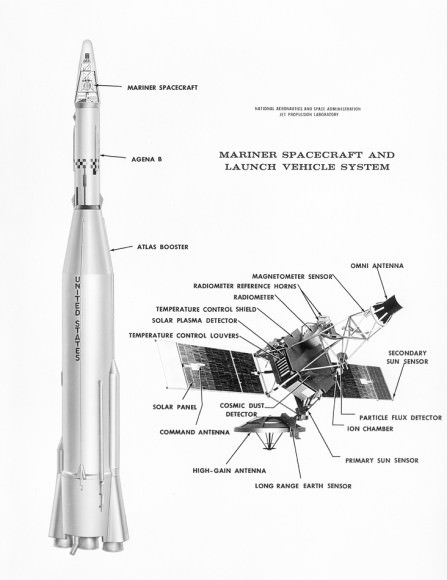
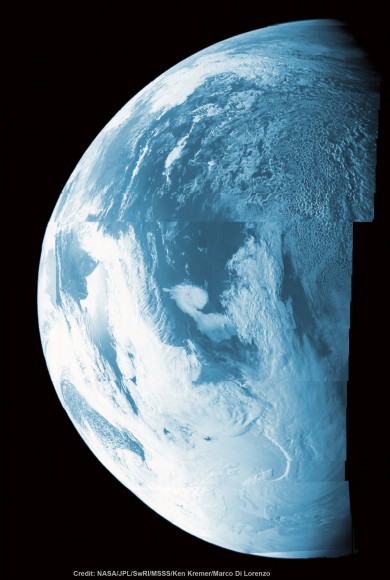
compare to Mariner 10 Earth mosaic above from 1973 to see advances in space technology
This false color composite shows more than half of Earth’s disk over the coast of Argentina and the South Atlantic Ocean as the Juno probe slingshotted by on Oct. 9, 2013 for a gravity assisted acceleration to Jupiter. The mosaic was assembled from raw images taken by the Junocam imager. Credit: NASA/JPL/SwRI/MSSS/Ken Kremer/Marco Di Lorenzo
Mercury’s False Moon: The Mercury/Mars Planetary Conjunction this Weekend
[/caption]
The history of astronomy is littered with astronomical objects in the solar system that have fallen to the wayside. These include fleeting sightings of Venusian moons, inter-mercurial planets, and even secondary moons of the Earth.
While none of these observations ever amounted to true discoveries, this weekend gives observers and astrophotographers a unique chance to “mimic” a spurious discovery that has dotted astronomical lore: a visual “pseudo-moon” for the planet Mercury. This “moon illusion” will occur on February 8, 2013 during the closest conjunction of two naked eye planets in 2013. February offers a chance to see the fleeting Mercury in the sky, and this conjunction with Mars will provide the opportunity to see how Mercury would look in the night sky if it had a moon!
Mercury has been suspected of having moons before. On March 29th 1974, the Mariner 10 spacecraft became the first mission to image the innermost world up close. Mariner 10 mapped 40-45% of Mercury on 3 successive passes, revealing a pock-marked world not that different than our own Moon. But Mariner 10 also detected something more: brief anomalies in the ultra-violet spectrum suggestive of a moon with a 3 day period. For a very brief time, Mercury was thought to have a moon of its own, and NASA nearly made a press release to this effect. The spectroscopic binary 31 Crateris is now suspect in the anomalous readings. Still, the Mariner 10 observation made researchers realize the observations in the extreme UV were possible over interstellar distances.
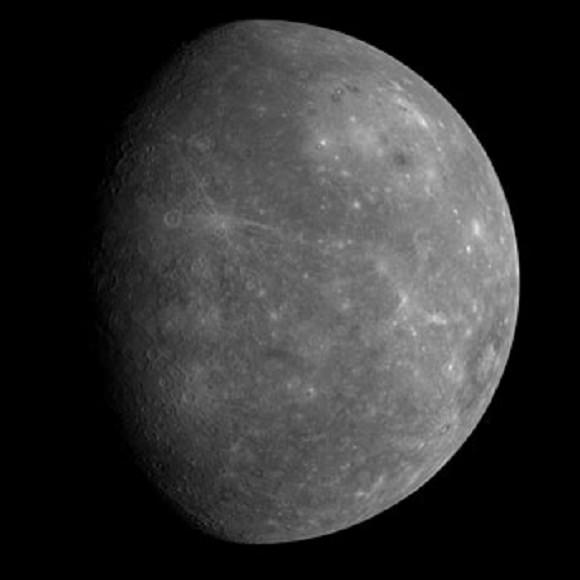
Today, NASA has a permanent emissary orbiting Mercury with its MESSENGER spacecraft. MESSENGER first entered orbit around Mercury on March 18th, 2011 after a series of trajectory changing flybys. MESSENGER has filled in the map of the remainder of Mercury’s surface, with no signs of the anomalous “moon.” Interestingly, MESSENGER was also on the lookout for “Vulcanoids” (tiny asteroids interior to Mercury’s orbit; sorry, Mr. Spock) while enroute to its final orbital insertion. NASA even released an April Fool’s Day prank of a fake “discovery” of a Mercurial moon dubbed Caduceus in 2012.
But MESSENGER has made some fascinating true to life discoveries, such as sampling Mercury’s tenuous exosphere & the possibility of ice at its permanently shadowed poles. Lots of new features have been mapped and named on Mercury, following the convention of naming features after famous deceased artists, musicians and authors set forth by the International Astronomical Union. It’s amazing to think that we had no detailed views at the entire surface of Mercury until the 1970’s, although some ground-based professional observatories and even skilled amateurs are now doing just that.
Fast forward to this weekend. Mercury is just beginning its first apparition of six in 2013 this week and is currently visible low in the dusk sky after sunset to the west. Mercury reaches greatest eastern elongation on February 16th at 18.1° from the Sun. Interestingly, that’s very close to the shortest elongation that can occur. Mercury’s orbit is eccentric enough that greatest elongation as seen from the Earth can vary from 17.9° to 27.8°. This month’s elongation happens within only 5 hours of Mercury reaching perihelion at 46 million kilometers from the Sun. This means that Mercury won’t peak above the dusk horizon for mid-northern latitude observers quite as high as it will during the next evening apparition of the planet in June.
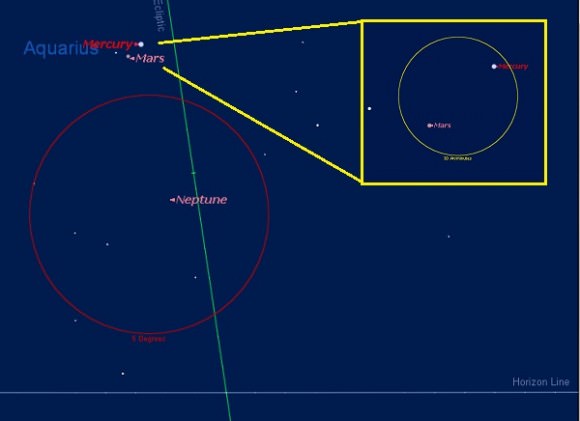
This appearance of Mercury does, however, have some things going for it. First off, the ecliptic sits at a favorable viewing angle, roughly perpendicular to the western horizon at dusk for mid- to high northern latitude observers. This gives Mercury a bit of a “boost” out of the weeds. Secondly, Mercury is a full magnitude (2.512 times) brighter when it reaches maximum elongation near perihelion than aphelion, such as its next appearance in the dawn sky on March 31st of this year. Mercury will reach magnitude -0.5, versus +0.5 in late March.
To see Mercury, find a site with a western horizon free of ground clutter and start sweeping the horizon with binoculars about 15 minutes after local sunset. See a reddish dot just above Mercury? That’s the planet Mars, shining about 7 times fainter than -1.0 magnitude Mercury at magnitude +1.2. Mercury is fast approaching a conjunction with Mars; the two will be only 15’ apart (half the average width of a Full Moon) on the evening of February 8th at 17:00 Universal Time!
If you ever wondered how Mercury would appear with a moon, now is a good time to take a look! Again, binoculars are the best optical tool for the job. Can you see both with the naked eye? Can you place both in the same low power field of view with a telescope? You’ll only have a 15-30 minute window (depending on latitude) to snare the pairing before they follow the setting Sun below the horizon. Photographing the pair will be tricky, though not impossible, as they present a very low contrast against the bright background twilight sky.

Don’t expect to see detail on Mercury or Mars telescopically; Mercury only appears 5.8” across on the 8th, while Mars is 4” in apparent size. Mars disappears from view later this month to reach solar conjunction on April 18th 2013. The waxing crescent Moon just 1 day after New joins the pair on the evenings of February 10th and 11th.
Now for the “Wow” factor of what you’re seeing. The conjunction of Mars and Mercury only appears close; in reality, they are over 180 million kilometers apart. Mercury is 1.15 Astronomical Units (A.U.s)/178 million kilometers from us on February 8th, while Mars is nearly at its farthest from us at 2.31 A.U.s/358 million kilometers distant. It’s splendid to think that with Curiosity and friends operating on Mars and Messenger orbiting Mercury, we now have permanent robotic “eyes” on and around both!
Credits: Simulation created by the author using Starry Night.
Mercury & Mars courtesy of Mike Weasner and the Cassiopeia Observatory. Used with permission.


